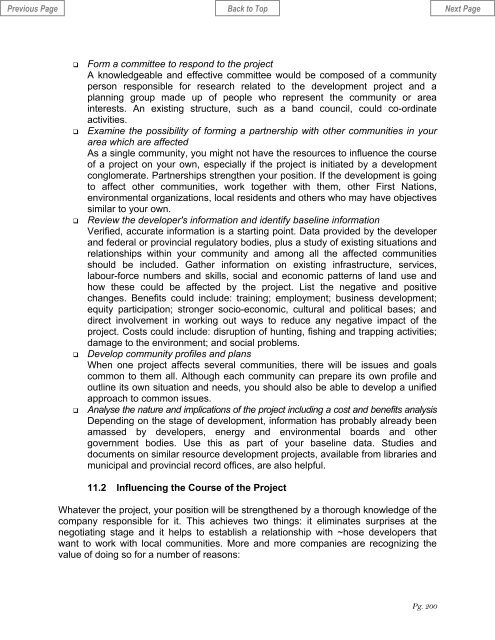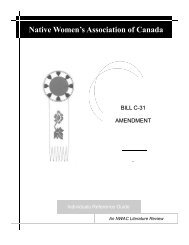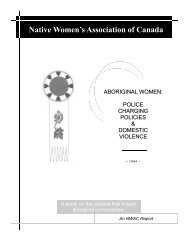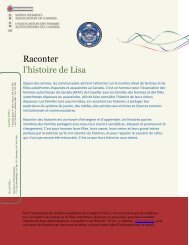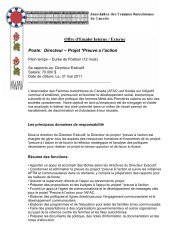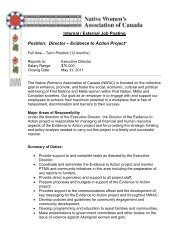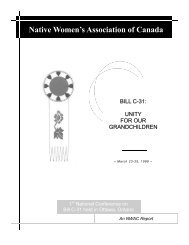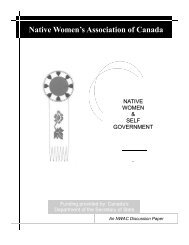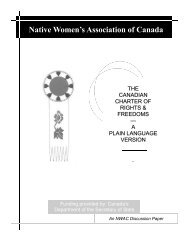Native Women's Association of Canada Website
Native Women's Association of Canada Website
Native Women's Association of Canada Website
- No tags were found...
Create successful ePaper yourself
Turn your PDF publications into a flip-book with our unique Google optimized e-Paper software.
Form a committee to respond to the projectA knowledgeable and effective committee would be composed <strong>of</strong> a communityperson responsible for research related to the development project and aplanning group made up <strong>of</strong> people who represent the community or areainterests. An existing structure, such as a band council, could co-ordinateactivities.Examine the possibility <strong>of</strong> forming a partnership with other communities in yourarea which are affectedAs a single community, you might not have the resources to influence the course<strong>of</strong> a project on your own, especially if the project is initiated by a developmentconglomerate. Partnerships strengthen your position. If the development is goingto affect other communities, work together with them, other First Nations,environmental organizations, local residents and others who may have objectivessimilar to your own.Review the developer's information and identify baseline informationVerified, accurate information is a starting point. Data provided by the developerand federal or provincial regulatory bodies, plus a study <strong>of</strong> existing situations andrelationships within your community and among all the affected communitiesshould be included. Gather information on existing infrastructure, services,labour-force numbers and skills, social and economic patterns <strong>of</strong> land use andhow these could be affected by the project. List the negative and positivechanges. Benefits could include: training; employment; business development;equity participation; stronger socio-economic, cultural and political bases; anddirect involvement in working out ways to reduce any negative impact <strong>of</strong> theproject. Costs could include: disruption <strong>of</strong> hunting, fishing and trapping activities;damage to the environment; and social problems.Develop community pr<strong>of</strong>iles and plansWhen one project affects several communities, there will be issues and goalscommon to them all. Although each community can prepare its own pr<strong>of</strong>ile andoutline its own situation and needs, you should also be able to develop a unifiedapproach to common issues.Analyse the nature and implications <strong>of</strong> the project including a cost and benefits analysisDepending on the stage <strong>of</strong> development, information has probably already beenamassed by developers, energy and environmental boards and othergovernment bodies. Use this as part <strong>of</strong> your baseline data. Studies anddocuments on similar resource development projects, available from libraries andmunicipal and provincial record <strong>of</strong>fices, are also helpful.11.2 Influencing the Course <strong>of</strong> the ProjectWhatever the project, your position will be strengthened by a thorough knowledge <strong>of</strong> thecompany responsible for it. This achieves two things: it eliminates surprises at thenegotiating stage and it helps to establish a relationship with ~hose developers thatwant to work with local communities. More and more companies are recognizing thevalue <strong>of</strong> doing so for a number <strong>of</strong> reasons:Pg. 200


